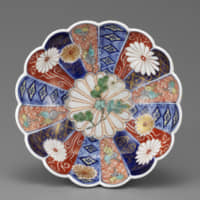Jan. 10-March 29
Ko-Imari and Nabeshima porcelain items have both been highly valued by powerful historical leaders.
Characterized by a gold-painted style called kinrande (gold brocade), Ko-Imari was perfected during the Genroku Era (1688-1704). Its popularity quickly spread throughout Japan and it became a style coveted by European nobles. Nabeshima pottery, however, was produced within Nabeshima feudal domains and, being symbolic of Hizen Province porcelain, it was often given as gifts to shogun families of feudal Japan.
This exhibition brings together the work of the two historical potteries to further explore their fascinatingly similar, yet different styles.
Idemitsu Museum of Arts, Moji; 2-3 Higashi-minatomachi, Moji-ku, Kitakyushu, Fukuoka. Mojiko Stn. 10 a.m.-5 p.m. ¥700. Closed Mon. 093-332-0251; www.s-idemitsu-mm.or.jp/en


















With your current subscription plan you can comment on stories. However, before writing your first comment, please create a display name in the Profile section of your subscriber account page.